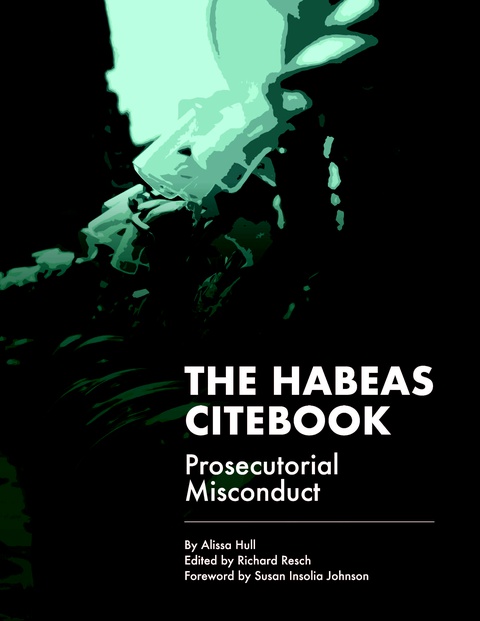The FBI Used an Undercover Cop With Pink Hair to Spy on Activists and Manufacture Crimes
by Trevor Aaronson
The young woman with long pink hair claimed to be from Washington state. One day during the summer of 2020, she walked into the Chinook Center, a community space for left-wing activists in Colorado Springs, Colorado, and offered to volunteer.
“She dressed in a way that was sort of noticeable,” said Samantha Christiansen, a co-founder of the Chinook Center. But no one among the activists found that unusual or alarming; everyone has their own style. They accepted her into the community.
The pink-haired woman said her name was Chelsie. She also dropped regular hints about her chosen profession.
“She implied over the course of getting to know her that she was a sex worker,” said Jon Christiansen, Samantha’s husband and another co-founder of the Chinook Center.
“I think somebody else had told me that, and I just was like, ‘Oh, OK. That makes sense,’” said Autum Carter-Wallace, an activist in Colorado Springs. “I never questioned it.”
But Chelsie’s identity was as fake as her long pink hair. The young woman, whose real name is April Rogers, is a detective at the Colorado Springs Police Department. The FBI enlisted her to infiltrate and spy on racial justice groups during the summer of 2020.
April Rogers, left, a police officer who went undercover for the FBI in the Colorado Springs activist community, participating in a housing-rights march during which several activists were arrested.
The work of Rogers, or “Chelsie,” is a direct offshoot of the FBI’s summer of 2020 investigation in Denver, where Mickey Windecker, a paid FBI informant, drove a silver hearse, rose to a leadership role in the racial justice movement, and encouraged activists to become violent. Windecker provided information to the FBI about an activist who attended demonstrations in both Denver and Colorado Springs, prompting federal agents to launch a new investigation in the smaller Colorado city. I tell the story of Windecker and his FBI work, as well as the investigation in Colorado Springs, in “Alphabet Boys,” a 10-episode documentary podcast from Western Sound and iHeartPodcasts.
As the FBI’s Colorado Springs investigation reveals, Denver wasn’t the only city where federal agents infiltrated racial justice groups that summer. Working through the Joint Terrorism Task Force, a partnership with local police, the FBI assembled files on local activists using information secretly gathered by Rogers.
Once Rogers gained trust among the activists, she tried to set up at least two young men in gun-running conspiracies. Her tactics mirrored those of Windecker, who tried to entrap two Denver racial justice activists in crimes, including an FBI-engineered plot to assassinate Colorado Attorney General Phil Weiser that went nowhere.
To reveal what happened in Colorado Springs, I obtained search warrant applications, body-camera video from local police assisting the FBI investigation, and recordings of conversations involving federal agents; reviewed hundreds of pages of internal FBI records about Social Media Exploitation, a program federal agents used to monitor racial justice activists nationwide; and interviewed about a dozen activists who were targeted in the federal probe.
The FBI declined to be interviewed about the Colorado Springs investigation and refused to respond in writing to a list of questions. The Colorado Springs Police Department also declined to comment, referring all questions to the FBI.
For her part, April Rogers won’t say anything. When called as a witness in a state court hearing, she testified that the Justice Department instructed her not to answer questions about the FBI investigation. “I’ve been told to respond, ‘I respectfully decline to answer,’” Rogers said under oath. The Colorado Springs Police Department declined to make her available for an interview.
This FBI investigation in Colorado Springs, 70 miles south of Denver, shows that federal law enforcement had embarked on a broad, and until now, secret strategy to spy on racial justice groups and try to entrap activists in crimes. “It’s disturbing, but not surprising, to learn the FBI’s reported targeting of racial justice activists in 2020 wasn’t limited to Denver,” Sen. Ron Wyden, D-Ore., told The Intercept. “It is a clear abuse of authority for the FBI to use undercover agents, informants, and local law enforcement to spy on and entrap people engaged in peaceful First Amendment-protected activities without any evidence of criminal activity or violent intent.”
The probe in Colorado Springs also raises questions about FBI priorities and the bureau’s perceptions of threats. As federal agents investigated political activists there, they also launched, and promptly dropped, an investigation of a man running a neo-Nazi website — a decision that would have deadly consequences.
A protester confronts a Colorado Springs police officer about the death of De’Von Bailey, 19, who was shot and killed by police in 2019, during a 2020 protest against police brutality in Colorado Springs, Colo.
The murder of George Floyd sparked protests in Colorado Springs, as in cities across the nation in the summer of 2020. Activists there were angered not only by Floyd’s death, but also by the killing of a local man, De’Von Bailey, who was shot in the back by police officers in 2019.
On August 3, 2020, as racial justice demonstrations roiled the nation, Colorado Springs activists organized a protest outside the suburban home of Alan Van’t Land, one of the officers involved in Bailey’s death.
“Alan Van’t Land, we are calling you a murderer,” a demonstrator yelled into a bullhorn.
“Murderer!” the other demonstrators repeated.
“Alan Van’t Land, we are calling you an assassin,” the man with the bullhorn continued. “Alan Van’t Land, we are calling you a racist. Alan Van’t Land, you are a pig.”
“Pig!” the demonstrators chanted. “Pig!”
They blocked the road through the neighborhood, and the protest escalated. A driver trying to pass through got into a verbal altercation with Charles Johnson, a Black activist and college student. Following the argument, Johnson allegedly swatted the driver’s phone out of his hands.
Other demonstrators recorded the encounter, and that and other footage from the protest circulated among far-right social media accounts as examples of the apparent dangers of racial justice and antifascist activists. Michelle Malkin, a conspiracy theorist who lives in Colorado Springs, tweeted: “Nowhere is safe.”
Most of the protesters wore face masks due to the pandemic, making it difficult for police to identify them, but the FBI had a source on the inside: Rogers, the young detective who suggested that she was a sex worker named Chelsie. The day after the demonstration, Rogers contacted Jon Christiansen. She said she had a filing cabinet to donate.
“And I was like, ‘Yeah, sure. We need all kinds of stuff,’” Christiansen remembered telling her.
A couple of days later, Rogers dropped off the cabinet.
“This giant filing cabinet,” Christiansen told me, pointing to it inside the Chinook Center. “In retrospect, after the fact, we’re like, ‘Right, that looks like a filing cabinet that would be in a police station.’”
For a year, Rogers went unnoticed as she spied on activists from the inside.
Rogers began volunteering regularly to help with administrative tasks. Several organizations used the Chinook Center as an office, including a local tenants’ union and a group that organized racial justice demonstrations, and Rogers had access to their membership records and email accounts. Christiansen didn’t know that Rogers, rifling through various files, was feeding information to the FBI.
For a year, Rogers went unnoticed as she spied on activists from the inside.
On July 31, 2021, the Chinook Center activists organized a housing rights rally to coincide with the city’s 150th-anniversary celebration. Rogers and other demonstrators marched down the city’s streets, many carrying “Rent Is Theft” signs and wearing red shirts that read “Housing Is a Human Right.”
The activists did not know that Colorado Springs police, working with the FBI, planned to arrest several of them that day.
In body-camera footage, Colorado Springs police Officer Scott Alamo revealed an intelligence report filled with pictures of local activists taken from social media.
Credit: Colorado Springs Police Department.
Sitting in a police cruiser, Officer Scott Alamo waited for the protesters. His body camera recorded him talking to other officers in the car.
“Well, boys,” Alamo said. “We sit, we wait, we get paid.”
Alamo pulled out a report with pictures of the activists they intended to arrest. The report, which Alamo accidentally revealed on his body camera, appeared to be a product of an FBI program known as Social Media Exploitation, or SOMEX, which allows the FBI and local police to mine social media for information about individual Americans without warrants. The photos in the report weren’t mugshots; they were images from social media, including Facebook, Instagram, and LinkedIn.
Internal records obtained by The Intercept last year revealed that the FBI and the Chicago Police Department used SOMEX to collect information about racial justice demonstrators in that city. Additional documents obtained by the national security-oriented transparency nonprofit Property of the People show that the FBI monitored social media activity, including Twitter posts and Facebook event pages, of racial justice activists in Washington, D.C., and Seattle. These internal documents also revealed that the FBI wanted to keep its social media activity secret. One document described the FBI’s need for new software solutions that could provide more invasive data mining of social media while maintaining “the lowest digital footprint.”
As Alamo looked at the SOMEX report, he focused on a photo of Jon Christiansen taken from one of his social media profiles.
“Professor?” Alamo asked his colleagues in the car, referring to Christiansen’s position as a sociology professor at a local college. He continued flipping through the report. “Boot to the face,” Alamo announced gleefully. “It’s going to happen.”
And it did. More than a dozen cops stormed into the housing march looking for activists whose photos they’d seen, including Christiansen and Johnson, the man who’d gotten into the altercation at the demonstration a year earlier.
Jacqueline Armendariz Unzueta, an activist and Colorado-based staffer for Democratic U.S. Sen. Michael Bennet at the time, was walking her bike just beyond the melee. “And I see what I thought was a bunch of cops dog-piled on the entire crowd,” she recalled. “And I was like, ‘Holy shit, they’re coming for everybody, then? What the fuck?’ Just shell-shocked.”
As she turned around, Armendariz Unzueta saw a police officer dressed in riot gear charging toward her. Her fight-or-flight response kicked in. Another officer’s body camera captured the encounter.
“I just threw my bike down and was like, ‘Bitch, you’re coming for me?’” Armendariz Unzueta said. “That’s the honest truth.”
The bike’s bell gave off a short ring as it hit the concrete, landing between Armendariz Unzueta and the charging officer. The bike did not touch the officer, who sidestepped it and continued toward the crowd of demonstrators.
“I just reacted,” Armendariz Unzueta told me.
Armendariz Unzueta was wearing a bike helmet, oversized sunglasses, and a face mask, making her difficult to identify from the video. But police, working with the FBI, knew where to look — no warrant needed — for their most-wanted cyclist: social media.
A Colorado Springs detective assigned to the Joint Terrorism Task Force started looking for the mysterious masked woman with the bicycle. Daniel Summey pulled up the social media accounts of known Chinook Center activists and then searched their friends lists. From there, Summey found Armendariz Unzueta’s accounts, including photos in which she wore the same shoes and helmet that could be seen in the police body-camera footage.
As a digital subscriber to Criminal Legal News, you can access full text and downloads for this and other premium content.
Already a subscriber? Login




